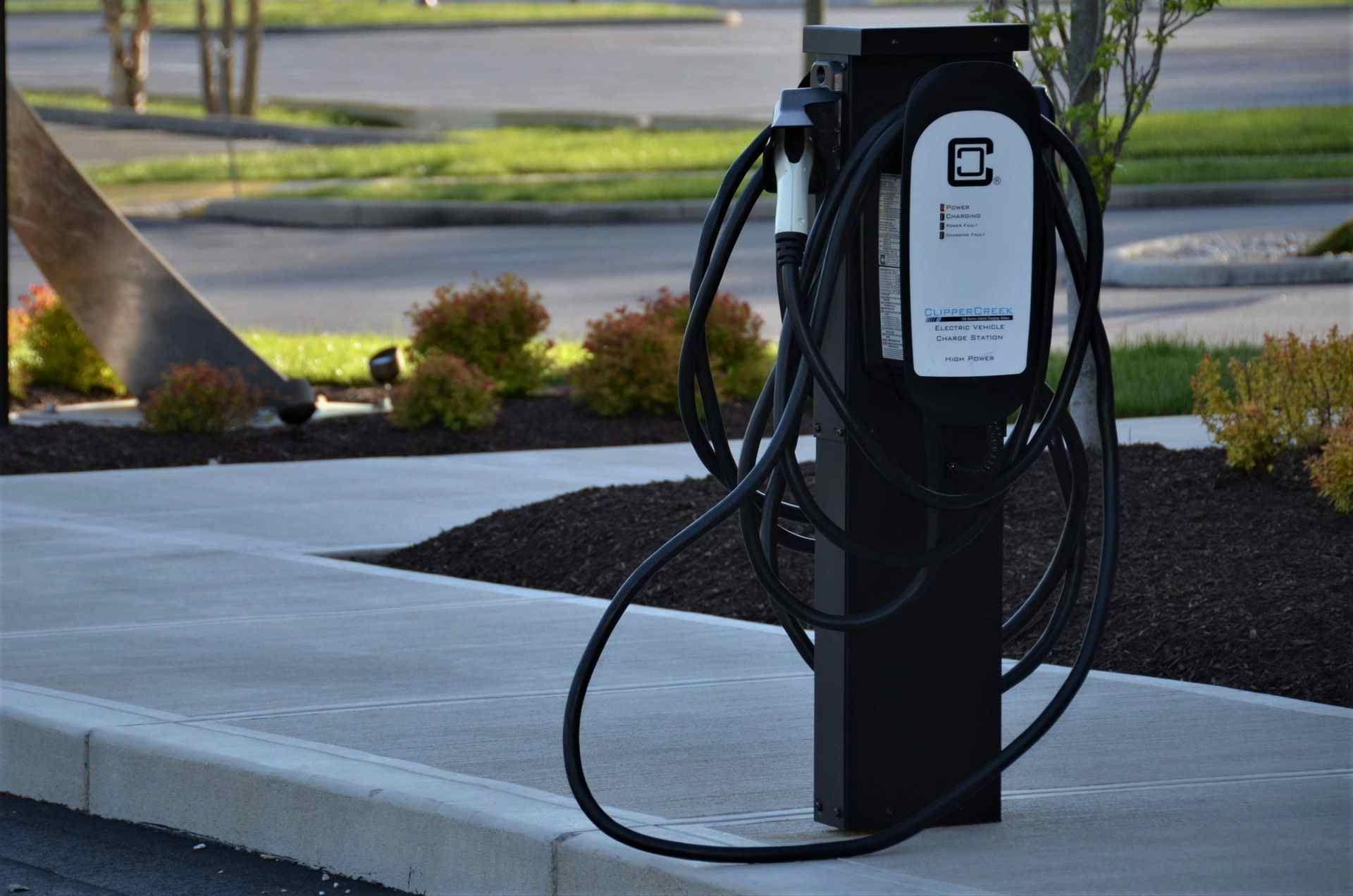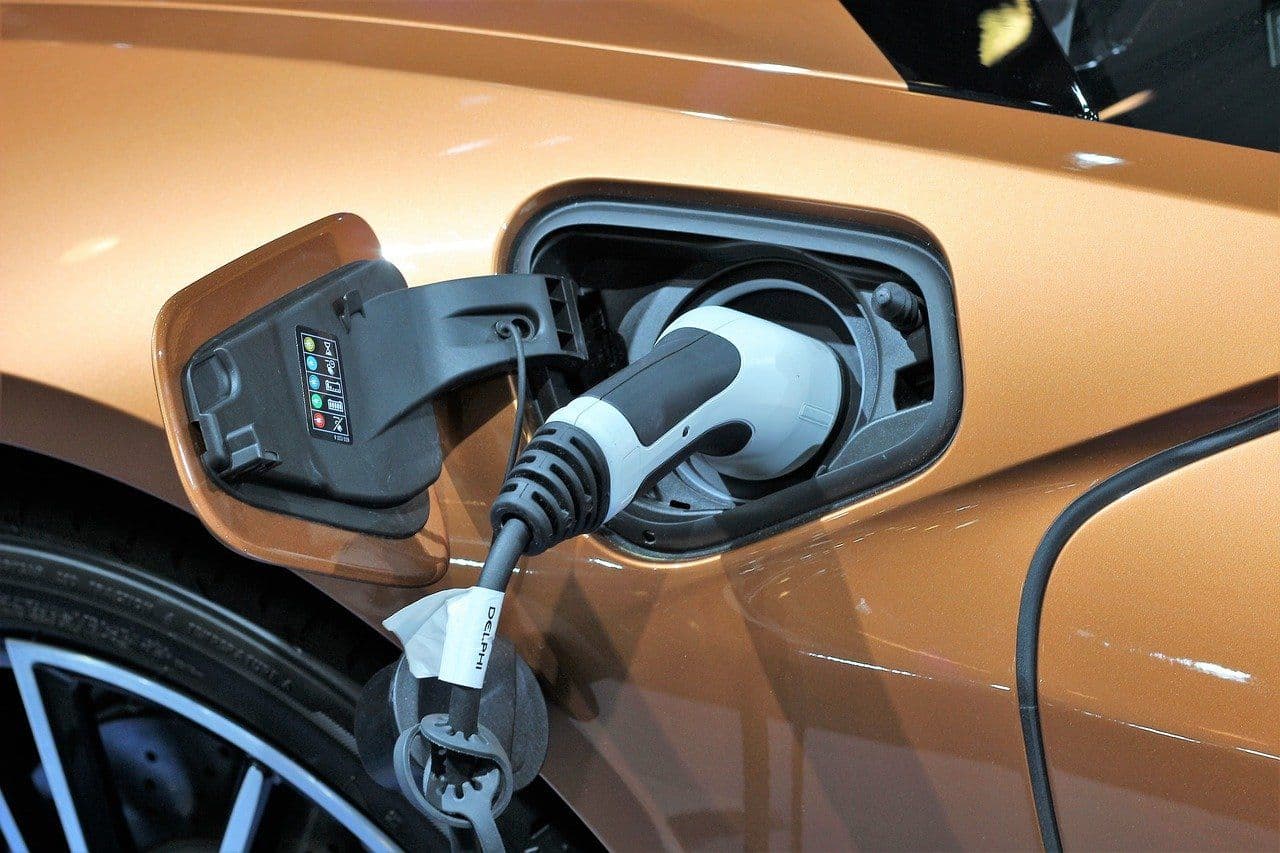Misconceptions about electric vehicles
Despite its strong development on the automotive market, the electric vehicle is still often viewed with suspicion by the general public, as it raises many questions and contradictory opinions. Carbone 4 aims to shed light on the debate to separate fact from fiction by answering these questions with a scientific and quantified approach.
This FAQ is divided into 4 themes.
Carbon impact
1. Are the emissions related to the manufacturing of the battery taken into account in the carbon comparisons?
The carbon footprint of a product is calculated by counting the significant greenhouse gas emissions over the product’s lifetime, from the extraction of raw materials to its end of life. Thus, to calculate the carbon footprint of a car, we consider not only the greenhouse gas (GHG) emissions emitted during the use of the vehicle, but also the GHG emissions emitted upstream (manufacture of the battery, production of electricity to power the car, etc.) and downstream (treatment of the vehicle at the end of its life, recycling of the battery, etc.)
2. Kilometer tipping point: after how many kilometers is the electric car better than the internal combustion engine (ICE) car in France? Or rather, why is this question wrongly phrased?
It is a fact that producing an electric car emits more greenhouse gases (CO2e) than its ICE equivalent, mainly because of the manufacturing of the batteries. This would be a problem for the climate only if the excess of CO2e were not more than largely offset by the reductions in emissions during use. However, this is indeed the case, since over its lifetime in France, an electric car emits 3 to 4 times less CO2e than its ICE equivalent. In fact, the question is badly put and serves above all by its semantics to discredit the electric vehicle. Our evaluations show that it is necessary to drive around 30 to 40,000 km (i.e. 2 to 3 years of use for an average usage) for the electric car to become better for the climate than its ICE equivalent "light hybrid". A car will cover about 200,000 km over its lifetime (the longevity of the batteries is absolutely not an obstacle for that, on the contrary)... so that any electric vehicle put on the road today instead of a light hybrid will in fact reduce emissions in an undeniable way over its lifetime. The only point of concern could be the "second" vehicles of households that are very little used, typically less than 3,000 km per year. But in practice, the low cost per kilometer of electric cars is a strong incentive to use them, so that these second vehicles can become the first in terms of usage.
3. And elsewhere? Is the electric car better than the ICE car everywhere in the world?
The climate benefits of electric vehicles compared to ICE vehicles come from their much lower energy consumption over their lifetime (despite the more emissive manufacturing of electric vehicles). The less carbon-based the electricity production, the greater the gap. Even when they are fueled with a coal-dominated electricity mix, as in Australia, China or Poland, the lifecycle emissions of electric cars are already lower than those of ICE cars. Thus, electric cars are already better for the climate than ICE cars in most countries of the world, and this is all the more true as almost all countries aim to decarbonize their electricity mix over time, i.e. by the end of the vehicle's life. In only about twenty countries is the electric car less virtuous than the ICE car (assuming that the electricity mix does not change). These are India, some African and Middle Eastern countries, and island countries such as Cuba, Haiti and Indonesia.
4. Let's go back to France: is an electric car better for the climate, regardless of its weight?
No, not necessarily, because a heavy electric vehicle requires more material and a bigger battery to meet its energy needs. And therefore more emissions linked to the manufacturing of the vehicle (which represents the main part of its carbon footprint, contrary to the ICE vehicle) as well as more emissions linked to the use phase because of this mass increment. In this respect, replicating the model of the internal combustion engine SUV with an electric vehicle is a perfect example of a "false good idea": an Audi e-tron has a carbon footprint twice as large as a Volkwagen e-Up over its lifetime (150,000 km). We need to think about cars that consume less energy, regardless of their type of energy, and to do this we need to make them lighter. But the current trend is towards bigger and heavier vehicles that consume more fuel : in the last 30 years, the weight of cars has increased by 30% on average in France.
5. Is the plug-in hybrid vehicle a good compromise between the electric vehicle and the ICE vehicle?
The plug-in hybrid vehicle seems to be the ideal solution today to meet the climate challenge:
- it is a convenient way for manufacturers to meet their regulatory obligations (in Europe), thanks to an emissions certification protocol that gives the plug-in hybrid vehicle a considerable advantage in terms of actual emissions.
- it is a reassuring technology for car owners who are concerned about environmental issues, but are not yet ready to take the step to 100% electric.
However, this technology suffers from real flaws that make it difficult to reconcile with the ambition of almost completely decarbonizing individual mobility within 20 years:
- the electric mode is little used in reality (less than 40% of kilometers), because of the existence of the combustion engine
- its combustion engine is generally less efficient than the state of the art of comparable gasoline/diesel vehicles...
- ... and all the more so as the presence of two engines, plus the battery, significantly increases the mass of such a vehicle, and therefore its consumption (ICE or electric).
Thus, the plug-in hybrid vehicle generally only allows a carbon gain of 15-20% (compared to 60-70% for a 100% electric vehicle), which is insufficient in relation to climate issues and is only relevant in rare cases.
Overall, the plug-in hybrid vehicle is the typical example of economic irrationality regarding cars: the choice of car drivers is most often dictated by the most restrictive use case instead of the most frequent use case (e.g.: purchase of a large powerful car with 5 seats, for 4 full trips in the year exceeding 500 km, while 90% of the time of use is devoted to trips of a few tens of kilometers with 1 or 2 people at most on board). The plug-in hybrid vehicle corresponds perfectly to this irrational choice, based on the apparently good idea of combining the "best of both technologies" (electric and ICE) to cover all cases of use. In reality, the situation appears to be sub-optimal economically (the vehicle is more expensive and more complex to maintain) and environmentally.
Environmental impacts (excluding carbon)
6. Do batteries use a lot of rare earths elements?
Contrary to what their name suggests, “rare earths elements” are not so rare on Earth in quantity. They are in fact as abundant as nickel or copper, but much more dispersed in the earth's crust, hence the name. Because of their similar properties, they are used in the manufacture of high-tech products. Today, there are no rare earths elements in the majority of batteries used in electric cars, and some electric motors may contain rare earths elements, but alternatives exist. However, there is still a raw materials issue because batteries use highly critical metals, i.e. the supply of which is a particularly important issue. Examples include cobalt and lithium, but also metals that are less critical today, but which could become so, given the expected exponential production trajectories, such as nickel, graphite and copper. While there is no identified risk of a physical shortage of resources by 2030, the strong growth in demand could lead to supply risks and market imbalances. The expected pressure on raw materials for battery production should naturally favour the development of recycling as a supply or of new battery chemistries to reduce the use of highly critical metals.
7. Are batteries recyclable?
Recycling of battery materials is crucial to reduce the pressure for virgin materials and thus limit the impacts associated with their extraction. Contrary to common belief, Li-ion batteries are recyclable, currently up to 50% by pyrometallurgy (by mass), and potentially up to 80-90% with new hydrometallurgical and mechanical processes. However, recyclable does not mean recycled, and currently less than 5% of end-of-life Li-ion batteries are. To be recovered and recycled, it is necessary to wait until the batteries reach the end of their life. As electric vehicles are only just emerging on the market, the industrial recycling sector is not yet mature. It should develop as these electric vehicles leave the market and as the pressure on raw materials increases. The resources then available will enable the industry to achieve real economies of scale and to seek to make recycled materials as competitive as raw materials. In this respect, the European Commission is proposing to set targets for the content of recycled materials in batteries placed on the EU market: from 2030 onwards, they will have to contain at least 12% recycled cobalt, 85% lead, 4% lithium and 4% nickel, and these proportions will rise to 20% recycled cobalt, 10% lithium and 12% nickel from 2035 onwards. But recycling, even if done optimally, will not be enough to meet demand. Any increase in battery production will require additional mining activity, that will need to be limited to ensure that only the right needs are met , and conducted using the best available processes. So it remains important to reverse the current race to increase battery sizes!
8. Does producing a battery pollute? And do children work in the mines?
Beyond the climate impact (greenhouse gas emissions) and air quality impact (pollutant emissions during use), it is important to consider other social and environmental impacts of electric vehicles. Electric vehicle batteries and motors, like all complex electronic products, contain a large number of materials whose extraction and refining are not without impact. The debate often focuses on the lithium and cobalt needed to produce batteries. These issues are very real: for example, the impact on water resources in the Andean "salars" (where lithium is extracted) or the working conditions in the cobalt mines in the Democratic Republic of Congo. However, these two metals represent 4% of the average weight of a battery. Copper (9%), graphite (9%), steel (9%) and aluminium (29%) are used in much greater quantities, and sometimes with equally important environmental and social issues, albeit less publicized. There are many risks and controversies (waste management, water pollution, air pollution, working conditions, etc.) as illustrated by the transition mineral tracker (https://trackers.business-humanrights.org/transition-minerals/). Sobriety and recycling still appear to be among the key elements to answer these questions. Furthermore, to avoid an exaggerated image, these specific problems with minerals for batteries (for electric vehicles as well as for many of our electronic devices) must be set against the controversies surrounding the oil industry. Oil spills and human rights abuses, in addition to the armed conflicts that have marked the history of oil, are a tragic reminder that conventional vehicles also depend on a controversial extractive activity.
9. Is the electric car better for air quality?
The public debate is most often focused on the comparative climate impacts of electric and combustion vehicles. The focus is therefore mainly on CO2e emissions, increasingly in a life cycle approach, which is a good thing. However, there is much less talk about a major virtue of electric engines: the total absence of exhaust pollutant emissions (nitrogen oxides NOx and particulate matter PM). Nothing for a battery-powered vehicle and just water vapour for a hydrogen vehicle. According to Santé Publique France, outdoor air pollution in our country causes 40,000 premature deaths per year (i.e. 9% of mortality in France) and a loss of life expectancy at age 30 that can exceed 2 years. As transport is one of the main contributors to this local pollution, the progressive replacement of internal combustion engine (ICE) vehicles by electrified vehicles (cars, buses) for journeys that cannot be made on foot or by bicycle is an excellent solution. There is still particulate matter from tyres and brakes. As electric vehicles are generally heavier, tyre abrasion at ground level is generally higher. On the other hand, thanks to the energy recovery devices fitted to these vehicles, the brake pads and discs are less stressed, so that less particulate matter is emitted during braking. All in all, this results in a comparable level of fine particle emissions between the two types of vehicles. So, overall (exhaust pollutants and particulate matter), an electric vehicle is clearly better than a combustion vehicle for air quality.
The use of electric vehicles
10. Does it cost more?
The question of the cost of electric vehicles often comes up in the debate, which is quite logical. Indeed, for a given range, the purchase price of an electric vehicle is higher than a internal combustion engine (ICE) vehicle today, even with public aid when it exists (as in France). However, any car owner knows very well that the cost of a vehicle is not limited to its purchase price: energy, insurance, maintenance, parking, tolls, etc., are all added to it. However, for the first two components, i.e. energy and maintenance, the electric vehicle is much less expensive than a conventional vehicle, particularly if it is recharged at home. As a result, for certain uses with a high mileage, the electric vehicle already has a better total cost of ownership (TCO) than the equivalent ICE vehicle (see, for example, the latest edition of the Arval dedicated booklet on the subject). To say that an electric vehicle is "expensive, very expensive" is therefore simplistic and reductive. As soon as the use cost is taken into account, the gap narrows considerably. Furthermore, as it is the purchase cost that represents the biggest obstacle for potential buyers, all manufacturers now communicate on a monthly rental, which allows the additional cost to be smoothed out over several years, as would be the case for a bank loan for the purchase of a conventional vehicle. Finally, one of the gateways to the electric vehicle should be the second-hand market, which promises to grow considerably in the years to come (x2 in 2021), particularly because the difference in purchase price compared to a conventional vehicle is narrowing.
11. What is the average life of a battery?
The life of a battery in an electric car is not measured in kilometers but in the number of charge-discharge cycles*. For a lithium-ion battery (the technology used by most electric cars), the theoretical life before obsolescence of the battery (i.e. when the battery reaches 70-80% of its original capacity, which makes it still relevant in a second life for stationary use, for example) is estimated at between 1000 and 1500 cycles. Thus, for a vehicle driving an average of 15,000 km per year, the theoretical life of the vehicle's battery is between 15 and 20 years. In practice, this means that there is no need to change the battery over the lifetime of a vehicle. It should be noted that several factors can affect the life of the battery: climate (heat), long periods without use, frequency of charging, charging power (particularly in the case of ultra-fast charging with too much power).
12. Is the range of electric cars suitable for long distances?
Among the obstacles to the adoption of electromobility by motorists, the issue of autonomy is systematically in the top 3. Even though 95% of car journeys never exceed 300 km for the overwhelming majority of French people, the obligation of having to recharge to cover long distances remains a strong psychological barrier. In practice, there are now around 60,000 public charging points in France, to enable long distances to be covered. This is still not enough if we look ahead to a fleet of several million electric vehicles, but the public authorities have shown greater ambitions to develop this network. However, depending on the regions and urban areas, there is a great deal of heterogeneity, which can occasionally cause problems due to difficulties in accessing charging points (e.g. tourist resorts during busy periods). In practice, long-distance travel is always combined, regardless of the type of vehicle, with breaks to reduce the risks of fatigue. Electric mobility requires these stops to be made at places with charging points, which is why it is important to position them near places where people would stop anyways (eg. Restaurants or resting areas). In the end, long-distance driving with an electric car is perfectly possible, provided that you plan your journey a little more carefully and accept spending a little more time on the road (about 1 to 2 hours more for a journey of between 300 and 500 km). By agreeing to this obligation, let's not forget that we reduce the impact of the journey on the climate by a factor of 3 to 4. Isn't it worth it?
13. Is it true that there is less maintenance on an electric car?
Maintenance of electric cars is simpler in several respects: fewer parts in the engine, no wearing parts in the engine (belt, exhaust hose), no clutch system, brake pads that are less stressed thanks to the recovery of braking energy, etc. These advantages more than compensate for the specific needs of electric cars such as the control of high voltage electrical circuits. Daily maintenance costs are therefore reduced by around 20% to 40% and technical visits are spaced out (every 30,000 km compared with 15,000 and 20,000 km for a petrol or diesel car according to the manufacturers).
14. Aren't batteries dangerous because they can catch fire?
Batteries can indeed catch fire as a result of thermal runaway, which can have several causes (mechanical damage, internal short-circuit, overload, etc.). The result is a fire that is difficult to control (metal fire), with the release of toxic fumes. This is why manufacturers provide a lot of protection both in the battery cells and in the BMS (Battery Management System) which manages the charge/discharge of the battery, and sometimes monitors the internal temperature. The risk of fire is inherent in batteries and should not be overlooked. However, it remains very rare : Tesla indicates in its impact report that, on a per-kilometre basis, there were 11 times fewer Tesla fires than the average (internal combustion engine) vehicle in the United States over 2012-2020.
15. Will there be enough charging points?
The French government's "100,000-charging point target" for 2021 has not been met and has been postponed to 2022, but the acceleration of the deployment of charging points is nevertheless a reality. The number of charging points open to the public in France has increased by 55% in 2021[1], and all service areas on the motorway network will be equipped with fast charging points by the end of the year[2]. Today, 1 on-street charging point is available for every 15 vehicles, a ratio that falls to 1 charging point for every 1.3 vehicles if we include private charging points[3] in private homes, condominiums, company car parks, etc.). However, the number of electric and hybrid vehicles in the French car fleet should continue to increase and reach more than 1 million in 2022 and, possibly, 5 to 6 million by 2030[4].
The objectives in terms of the number of public charging points are not yet well defined, but overall, public and private combined, the Government aims to have 7 millions charging points installed by 2030[5]. 5] This objective would make it possible to maintain the current ratio of one charging point for every 1 to 2 vehicles. To this end, legislative and regulatory measures aimed at removing obstacles to the deployment of charging points and financial aid for their installation have been put in place.
If deployment proceeds at the right pace, the experience of queuing up during holiday rushes should be the exception, rather than the rule. Note that Tesla is experimenting (at least in France) with free charging on the eve of holiday rushes, at some of its stations, to smooth out demand and avoid too great a rush on a single day.
---
*A charge-discharge cycle corresponds to a theoretical full charge from 0 to 100%, and not the number of times the car can be charged. In practice, the car is charged before it is completely empty. Thus, the actual number of charges is greater than the number of charge-discharge cycles.
Other questions
16. Will the electricity grid hold?
This question raises the issue of the power demanded by the charging of electric cars, which could jeopardise the balance of the network (on a national or more regional scale). On this subject, the models carried out by RTE [6] indicate that the impact could be absorbed without difficulty if we assume "smart" load management (use of smart grid functionalities and tariff signals). More precisely, the electrical power that the load of 8 million electrified vehicles would represent without control would be 8 GW during the winter peak at 7pm, taking into account the spread of load use (for an average winter working day and compared to a situation without electrified vehicles). The French electricity grid has a peak capacity of over 100 GW. According to RTE, it is also interesting to note that the evolution of other electrical uses by 2030 has an impact of reducing the peak by a similar amount. With load management, the power required by the 8 million electrified vehicles at the 7pm winter peak would be much less: 3.5 GW. In this case, for the same reasons as above, the 7pm peak would not increase but decrease compared to 2016. The large-scale development of the electric car in France is therefore not out of reach for the electricity network over the next 10 years, even in the hypothesis of limited “smart” recharging, provided of course that the levels of controllable electricity production capacity are similar to the current level. However, this analysis leaves a blind spot on geographical adequacy: at the local distribution level, overload is likely to occur and would require strengthening of the distribution network. In the longer term, if we anticipate a fleet of around 20-25 million vehicles (or more, which is not necessarily desirable), investments will of course have to be made in the network, but at levels that the players in electricity production, transmission and distribution can cope with, as long as this is anticipated [7]. The role of public authorities will be decisive in this respect.
17. If we replace all conventional cars with electric cars, do we need to build new nuclear power plants or thousands of wind turbines?
Electricity consumption in connection with the development of electric mobility is not an issue in terms of electricity production, even with a very large volume of vehicles. To be convinced of this, we only need to compare two figures: 12 million electric cars (including plug-in hybrids) would generate an electricity demand of about 30 TWh according to RTE, i.e. a quantity equivalent to about 5 to 6% of the current national production. How so? Simply because an electric motor is 3 to 4 times more energy efficient than a combustion engine. Moreover, this consumption of electricity for individual electro-mobility would not be added to current consumption because it would be largely offset by the general drop in consumption in the medium term for other uses (effect of energy efficiency in industry or the residential-tertiary sector).
18. Is it true that it will be possible to charge by induction?
Charging by electromagnetic induction, or "wireless", exists in two forms: at a standstill and while driving. The first form would take place in a parking space and would replace the charging station as we know it today. This solution would simply avoid the need to go around the vehicle to plug in the cable or pass the badge on the terminal: charging would start automatically. The so-called "dynamic" form would allow the car to be charged while driving thanks to a device integrated under the road. This solution would be particularly interesting because it would significantly improve the range of electric cars and reduce the size of their batteries. Initial tests have been carried out and turned out to be promising. However, although some manufacturers are proposing to adapt existing models, the electric cars currently on the market are not adapted to this type of charging (as they are not equipped with receiver coils), and the rapid fall in the cost of batteries could postpone or kill the innovation.
19. Geopolitics: will the electric vehicle create new dependencies on foreign countries?
When looking at vehicle production, the internal combustion engine car has traditionally been a topic of European economic sovereignty. Europe is a net exporter and European manufacturers are among the most successful, thanks in particular to their mastery of the complexity of combustion engines. For electric cars, the market was until very recently dominated by Chinese manufacturers (driven by very strong domestic Chinese demand), although the situation could change. In 2020, new electric car registrations in Europe surpassed those in China for the first time. Going into more detail, however, it can be seen that even when it takes place in Europe, the manufacture of electric vehicles relies in part on the import of batteries from abroad. In 2020, European battery production was slightly lower than demand. However, this could change very quickly. Indeed, the numerous announcements of European gigafactories suggest that Europe could become a net exporter of batteries as early as 2023 [8]. So would the problem of sovereignty be solved? The situation is not so simple. Indeed, even when they are manufactured in Europe, batteries are made with materials that are mostly mined outside Europe - for example, cobalt from the Democratic Republic of Congo and lithium from the "lithium triangle": Argentina, Bolivia, Chile - and most often also refined outside Europe. In this respect, the few European projects for local production of lithium, for example via mines in Portugal or recovery from Alsatian brines, remain below the required level. Thus, when we look at vehicle production from the point of view of economic sovereignty, it is clear that the electric car is causing Europe to lose the historical advantage it had with internal combustion engines. Faced with this observation, Europe's response of promoting electric cars while investing in locating in Europe as much as possible (battery production, even if it means importing raw materials from elsewhere) seems relevant. In a world that is moving towards electric vehicles anyway, we might as well act to take advantage of what we can. Finally, this debate on vehicle production should not overshadow the use phase of the vehicles. While the ICE combustion car creates a dependence on oil-producing countries, the electric vehicle makes it possible to get rid of this dependence by relying on an electrical mix composed of several primary energy sources and therefore via several supplier countries. It is for a reason that the latest IEA plan to reduce dependence on Russian oil gives considerable weight to the development of electric vehicles!
20. What impact will the development of electric cars have on jobs?
The transition to electric cars will have a strong impact on jobs in the automotive industry. Indeed, the manufacture of an electric car requires about 40% less labour hours than a combustion car, as the electric car is simpler to produce with fewer parts and components, but also less assembly time required. OEMs and suppliers focused on combustion engines are particularly at risk. However, the growth of electric cars will lead to the emergence of new jobs, particularly in the manufacture and assembly of batteries, but also as installers of charging stations, cable technicians, etc. New mobility services could also develop (e.g. long-distance, as indicated in our episode 3). For this transition to be an opportunity, it is necessary to anticipate and invest in the transformation of the automotive industry, in particular in (i) the creation of a competitive European battery manufacturing and end-of-life sector, in order to relocate production in Europe and (ii) in the support of employees to train them in the new skills required and to help them witch jobs.
Note: methodological details and assumptions are available in our publication.
Contact us
Contact us about any question you have about Carbone 4, or for a request for specific assistance.

























